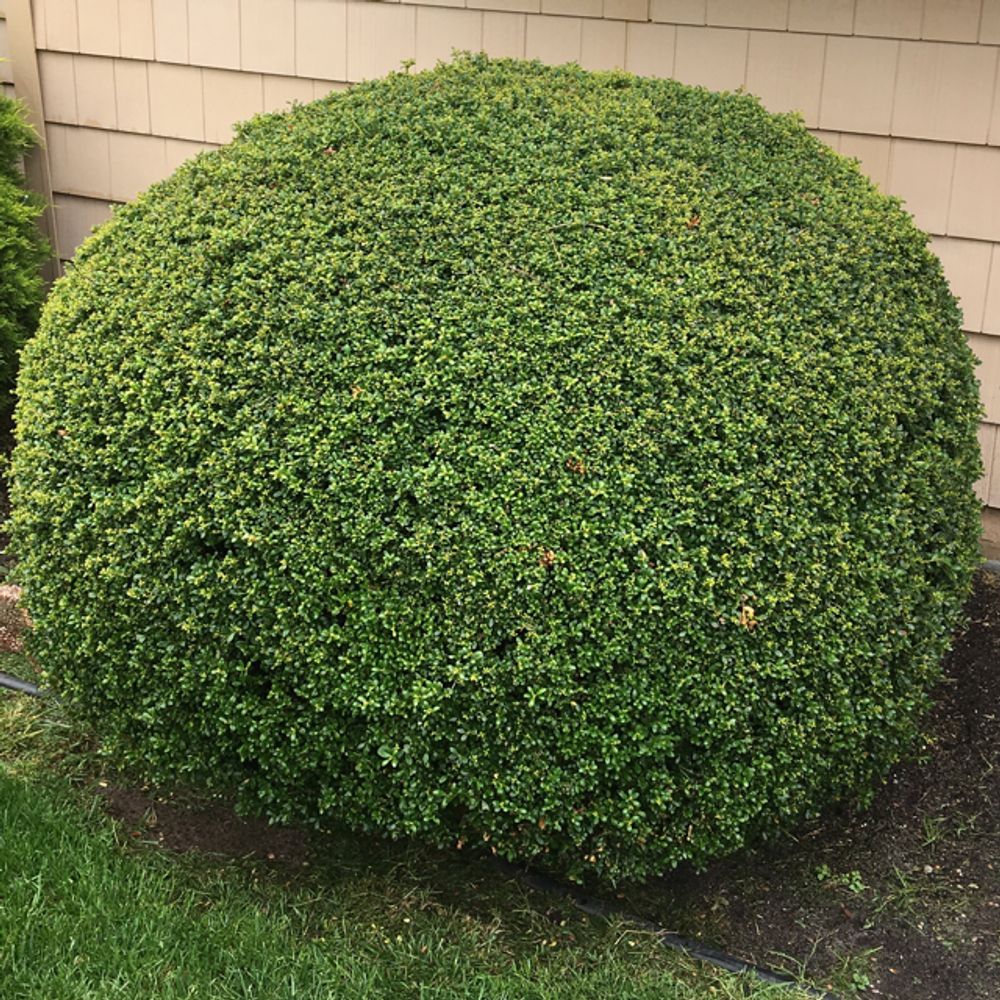Boxwood
(Buxus)

Description
"Pet poisonous" – Toxic parts: entire plant esp. stem, roots Buxus microphylla, commonly known as Littleleaf Boxwood, is a small evergreen shrub or tree that belongs to the Buxaceae family. It is native to Japan and is widely cultivated for its ornamental qualities in various countries, including the United States, Europe, and Australia. The shrub is popular for its small leaves, dense growth habit, and versatility in landscaping. In this article, we will explore the characteristics, cultivation, and use of Buxus microphylla in detail. Botanical Characteristics: Buxus microphylla is a slow-growing shrub that can reach a height of 3 to 6 feet and a spread of 4 to 6 feet. The plant has a dense, round form and is often used in hedgerows, topiary, and as a specimen plant. The leaves of Buxus microphylla are its most striking feature, being small, glossy and dark green in color, and have a leathery texture. The leaves are opposite, oval, and measure about 0.5 to 1 inch in length. The plant produces inconspicuous flowers in the spring that are yellow-green in color and are followed by small, three-lobed capsules that contain seeds. Cultivation: Buxus microphylla is a hardy plant that is relatively easy to grow and maintain. It is tolerant of a wide range of soils, from sandy to clay, as long as the soil is well-drained. It prefers a moist, but well-drained soil and can tolerate partial shade, but performs best in full sun to partial shade. Buxus microphylla is also very resistant to pests and diseases, making it a low-maintenance option for gardeners. The plant can be propagated by seed, cuttings, or division. Cuttings taken in the summer will root readily, while division of established shrubs should be done in the spring. Buxus microphylla should be pruned regularly to maintain its shape and size, and to encourage new growth. It is also important to avoid over-pruning as this can lead to bare spots and encourage disease. Uses: Buxus microphylla is widely used in landscaping and horticulture for its versatility and ornamental qualities. It is commonly used as a hedge or screen plant, as a border plant, and in topiary designs. Its small size and dense growth habit make it an ideal plant for use in small gardens, rock gardens, and as a foundation plant. The plant's small leaves and slow growth rate make it a great choice for formal gardens, where it can be pruned into intricate shapes and patterns. In addition to its ornamental value, Buxus microphylla is also used for bonsai and has been cultivated for centuries in Japan for this purpose. Its small leaves and dense growth habit make it an ideal species for bonsai culture, where it can be trained and shaped into a variety of styles. In conclusion, Buxus microphylla is a versatile, low-maintenance, and ornamental shrub that is widely used in landscaping and horticulture. Its small leaves, dense growth habit, and resistance to pests and diseases make it an ideal choice for gardeners and landscapers. Whether used as a hedge, border plant, or in topiary designs, Buxus microphylla is sure to add beauty and interest to any garden or landscape. Buxus Genus Buxus is a genus of about 70 species in the family Buxaceae. Common names include box (majority of English-speaking countries) or boxwood (North America). The boxes are native to western and southern Europe, southwest, southern and eastern Asia, Africa, Madagascar, northernmost South America, Central America, Mexico and the Caribbean, with the majority of species being tropical or subtropical; only the European and some Asian species are frost-tolerant. Centres of diversity occur in Cuba (about 30 species), China (17 species) and Madagascar (9 species). They are slow-growing evergreen shrubs and small trees, growing to 2-12 m (rarely 15 m) tall. The leaves are opposite, rounded to lanceolate, and leathery; they are small in most species, typically 1.5-5 cm long and 0.3-2.5 cm broad, but up to 11 cm long and 5 cm broad in B. macrocarpa. The flowers are small and yellow-green, monoecious with both sexes present on a plant. The fruit is a small capsule 0.5-1.5 cm long (to 3 cm in B. macrocarpa), containing several small seeds. The genus splits into three genetically distinct sections, each section in a different region, with the Eurasian species in one section, the African (except northwest Africa) and Madagascan species in the second, and the American species in the third. The African and American sections are genetically closer to each other than to the Eurasian section.
Taxonomic tree:







